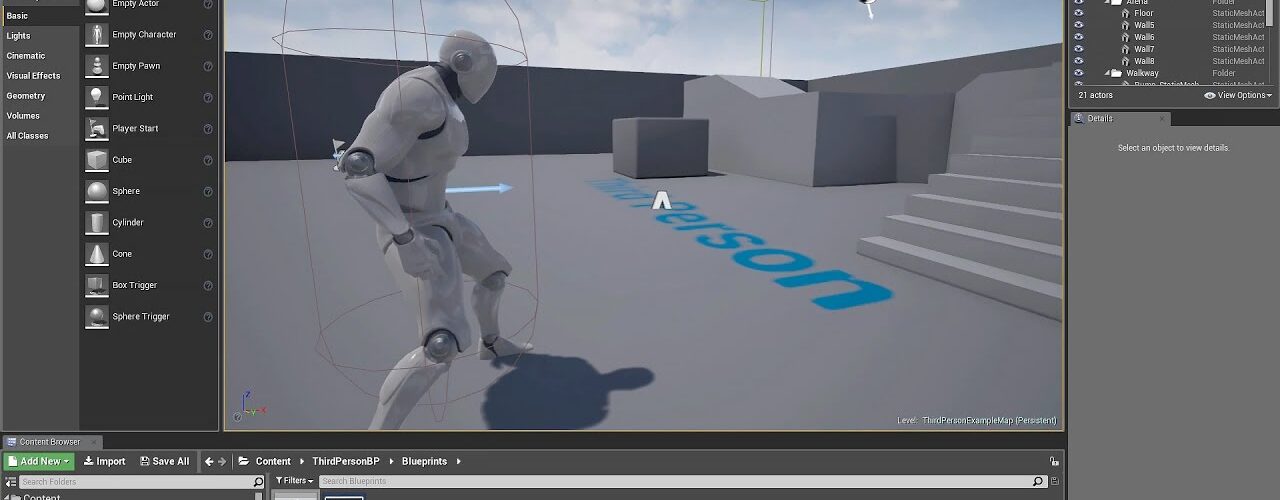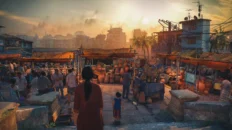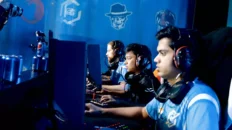How do we prevent video game prices from going up and speed up production when AAA titles have to pack such a heavyweight punch? We’re stuck in a tight spot: gamers hunger for more, faster, but studios are running on fumes, manpower-wise.
We’re also navigating a tricky era with AI stepping onto the scene, potentially elbowing out the very people it’s supposed to help. I won’t go deep into AI talk here – we’ve got loads of content covering our chats with everyone from studio directors to the sound wizards. If AI intrigues you, tune in. There’s a whole universe of cool tech on the brink, ripe for harnessing in ways that don’t undercut human talent.
Did you know that the all-time bestseller, GTA5, has raked in over $8.5 billion since its debut? That’s head and shoulders above Avatar, the box-office champ, which pulled in just shy of $3 billion. And the production costs? GTA5’s tab was $265 million, slightly edging out Avatar’s $237 million bill. Stellar ROI for both, but it’s crystal clear: the gaming industry’s profit potential skyrockets past traditional movies and TV.

Why do video games cost a small fortune to make… that’s the burning question. To get the full picture, we need to peek behind the curtain of a gaming company. Take Rockstar, the brains behind GTA, with a whopping 1,000+ employees working on the game. And that’s not even counting the external assistance they might’ve roped in for sound, visuals, DLC, or whatnot.
Focusing on just the in-house team, without considering any outsourced work, let’s spotlight the role of environmental artists. Titles for roles can vary between studios, so here’s a broad-strokes overview. An environmental artist is the jack-of-all-trades in the art world, who might specialize in areas like:
- World Building: This is about piecing together various elements to weave a compelling narrative through the game’s setting, blending characters, structures, and landscapes to breathe life into the game world.
- Prop Modeling: Here, the focus is on crafting 3D models for in-game objects, ranging from mundane furniture to unique, otherworldly elements.
- Materials: This involves creating textures and surfaces for models, defining how they interact with light and shadows to achieve the desired visual effect.
- Lighting: A critical aspect that involves strategizing the placement and intensity of light sources to enhance the game’s atmosphere, guide players, and spotlight important areas.
- Level Design: The art of designing the game’s stages, setting up the layout, challenges, and objectives to create a seamless flow for players.
Just from this, it’s evident the scale of collaboration and expertise required, even for seemingly straightforward roles. This is just a slice of the pie—Rockstar’s 1,000+ strong workforce doesn’t even include external collaborators. Now, imagine the collective effort behind every detail in GTA’s sprawling, vibrant world. Smaller studios might streamline these roles, but AAA games demand this level of dedication and manpower for a reason.”
Let’s crank up the volume and explore what it takes to build the immersive audio that pulls you right into the game world. Borrowing wisdom from Reddit’s theygg (because I couldn’t say it better myself), here’s a breakdown of the sound maestros behind the magic:
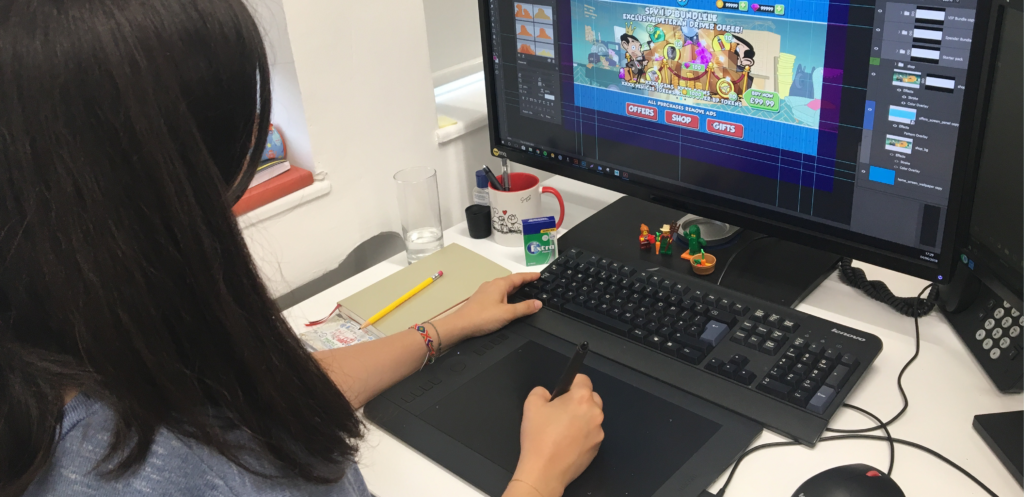
- Technical Sound Designer: The wizards using the game engine’s tools to conjure audio magic. They’re the bridge between creative dreams and technical realities, making the impossible possible through scripting and blueprints. Seen in medium to large teams, their innovations dazzle both creative minds and tech gurus alike. Surprisingly, a STEM degree isn’t a must-have here.
- Audio Programmer: The go-to for teams asking, “We need sound, but how?” Often in smaller squads or where there’s a gap in audio expertise, they rig the audio engine or middleware, doubling as sound designers. It’s a versatile role, thriving without necessarily needing a STEM background.
- Audio Software Engineer: Stepping into the more formal territory, these engineers specialize in the soundscape of gaming. They might not always hold a degree, but their skills are on par with their academically trained peers. Their realm includes everything from integrating audio engines to tool creation, critical in established teams.
- Middleware/Audio Engine Creators: The unsung heroes crafting the tools like WWise and FMOD that empower sound designers to bring their auditory visions to life. They’re all about making complex programming accessible, enabling tech-savvy designers to create with freedom. Their expertise matches that of an audio software engineer.
- Digital Signal Processing (DSP) Engineer / Machine Learning Engineer: The architects of auditory effects and voice interactions, these roles are for the sound alchemists making digital audio feel real or fantastically alien. A hefty role that often requires advanced degrees in STEM.
- Audio Platform Engineer: The builders of the platforms themselves—think Sony, Xbox, Nintendo. They ensure that gaming systems play nice with game engines and audio tools, often delving deep into operating system or service development. STEM degree? Absolutely.
- Firmware/Electrical Engineer: The masters of the hardware side, these folks design the peripherals that deliver sound to our ears. Headsets, controllers, and beyond—they know their electronics inside and out, with a degree to back it up.
- Acoustical Engineer: Last but not least, they’re ensuring that speakers and headphones deliver pristine sound. Sometimes, their work involves ultra-cool silent chambers and dummies with microphones for ears. Typically, they come from an electrical or mechanical engineering background.
You might think, “Isn’t this overkill for a game?” But when we’re talking about creating unparalleled experiences, nothing is too extravagant. Why hold back when crafting worlds that captivate millions?”
Crafting a video game is like orchestrating a symphony, with each role playing a crucial part in the harmony. Among these, localization is key for a global hit. It’s not just about translating words; it’s about respecting cultures and nuances, ensuring your game is a welcome guest in any language. Then there’s accessibility, a vital aspect that’s too often overlooked. Features for color blindness, closed captions, and remappable controls aren’t just nice-to-haves—they’re must-haves, making games truly playable for all.
Quality Assurance (QA) can’t be understated either. Every gamer knows the frustration of a glitchy release. Yes, patches can fix bugs post-launch, but first impressions are everything. It’s a delicate balance between hitting deadlines and releasing a polished product. Cutting corners can alienate your audience, but delays can be costly. What’s a studio to do?
This conversation could easily spill over into another crucial area: community building. A vibrant, engaged community is the lifeblood of any game. Take Gemma Doyle’s work with Zynga’s VIP team, for instance. By listening to their most dedicated players, they fine-tuned the gaming experience, encouraging both loyalty and valuable feedback. It’s a testament to the power of nurturing those who love your game, ensuring they not only stay but also attract others to join in.
Every facet, from localization to community management, stands as a foundational pillar of a standout gaming experience. It’s a multifaceted, team-driven endeavor that extends well beyond basic game development, touching the essence of inviting players into a new universe.
Take GTA, which evolved from a single-player experience to a juggernaut pulling in over $800 million at launch, thanks largely to its live ops/online segment. Live ops are a double-edged sword—initially celebrated for extending a game’s life and enhancing community engagement, yet increasingly scrutinized when perceived as a cash grab. While the concept shines when integrated seamlessly, shoehorning it into games where it feels out of place can frustrate the very community it seeks to engage. Titles like Suicide Squad and Redfall have felt the heat for this reason, sparking debate among players who crave the narrative depth these studios are known for, not necessarily an ongoing live ops experience.
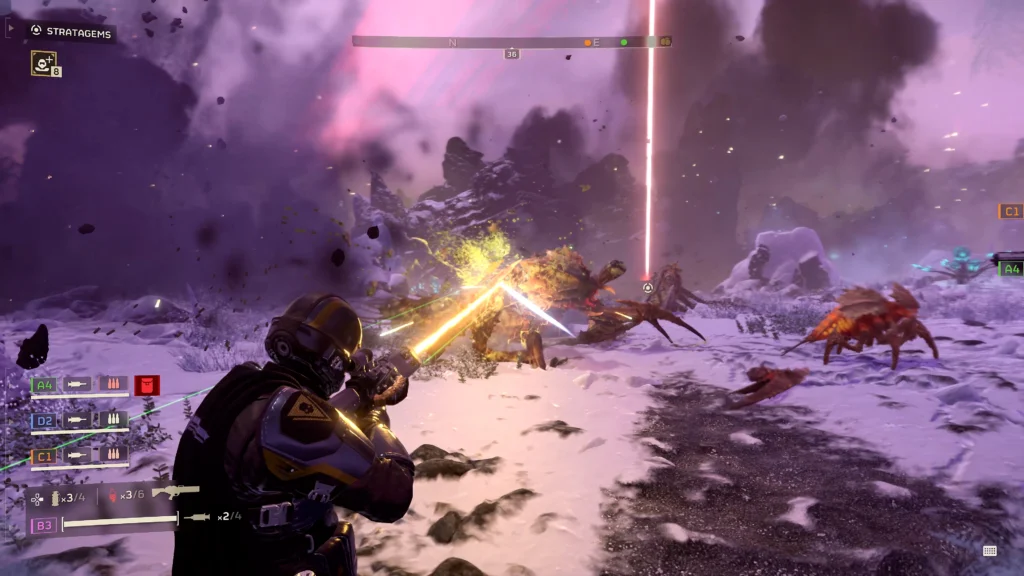
The symphony of game development also highlights the critical role of project and product managers in keeping the melody smooth and cohesive. It’s a revelation, really, learning from industry veterans like Ivan Zegarra from Socialpoint, how pivotal product management is over traditional development roles in steering a studio’s direction. It seemed counterintuitive at first—envisioning studio leaders more as code wizards than conductors of an intricate organizational orchestra. Yet, it perfectly encapsulates the essence of game development: a harmonious blend of art, technology, and strategic oversight, ensuring every section plays in sync to create something truly magical.
Digging into the creation of AAA games might seem like decoding a mystical tome to some. Yes, it’s a Herculean task with roles and specializations that could fill a small village. Smaller studios, however, streamline this process, embodying several roles into one person. It’s a different game with games that don’t aspire to the colossal scale of a GTA5 or, in specific scenarios like Helldivers, where live ops genuinely enhance the gaming experience, making agile sprints a feasible strategy without the need to have all the pieces in place from the get-go.
Understanding the technical depths of video game creation can be daunting, but it’s also enlightening. This deep dive isn’t to deter but to demystify and inspire. Don’t be put off by the complexity; starting your game development journey can begin with a single, small step. Many beloved games today, think of mobile hits or indie darlings like Hades, come from modest beginnings, often crafted by small teams or even solo developers. Rome wasn’t built in a day, and neither is any game. Start small, focus on what brings joy and fun into your creation, and grow from there. Your game development odyssey begins with that first line of code, that initial character sketch, or that spark of an idea. Who knows where it will lead? In the realm of game development, managing time and budget against the backdrop of potential setbacks is a monumental task. Delays are a common dilemma; they can significantly inflate budgets and stretch resources thin. On the flip side, rushing a game to market before it’s fully polished can lead to a buggy release, potentially damaging a studio’s reputation. This predicament places both developers and players in a tricky position. Criticizing studios for launch issues is subjective and ultimately depends on individual player perspectives. Every aspect of game creation, from the initial concept to the final release, costs money, and as consumers, we make a statement with our purchasing decisions. It’s important to recognize the extensive work, time, and talent that go into making a game. While this understanding doesn’t excuse developers from accountability for their products, it does invite us, as players, to consider the broader context of game development. Ultimately, we have the power to influence the industry through our choices and feedback.

